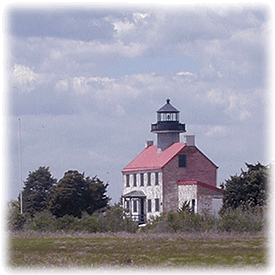| The Collective Memory: A Resource to Conserve
In every community throughout the region you’ll find a handful of elders who possess a wealth of information about various places and habitats. Maintaining the living landscape of culture and tradition requires that the younger generation and newcomers (as well as professional planners) learn from the region’s older indigenous teachers. The only possible way to maintain true continuity with the past in the region is by promoting that direct flow of memories, knowledge, and skills from those who have them to those who should receive them.
… Many tradition bearers in the Pinelands National Reserve (which extends midway through the Down Jersey region in both Cumberland and Cape May counties) — eelers, boat builders, trappers, colliers, and glassblowers — are in the minority. The effect of their scarcity on their survival is much the opposite effect of scarcity on Pine Barrens tree frogs and curly-grass fern — a parallel that Tom Brown recently marked with a sign that says: “Trappers: An Endangered Species.” The realization that flora and fauna are endangered often results in the creation of advocacy groups to protect them through  legislative channels. However, because of their marginal status, the bearers of endangered traditional skills do not inspire such advocates. legislative channels. However, because of their marginal status, the bearers of endangered traditional skills do not inspire such advocates.
… Folklife expressions are the index to the health of the collective memories, contained within the bodies of the traditional peoples, which we might regard as the cultural equivalent of the Cohansey Aquifer. Like the aquifer, the collective memory cannot be looked at or photographed all at once. Both are “bodies”: one a body of water, the other, a body of knowledge. Like the aquifer, the collective memory can be tracked from where it surfaces, but in human minds rather than the headwaters.
The collective memory is a renewable resource. Unlike artifacts, however, it is not detachable from its sources. Decoys, song texts, and packing houses are, to borrow an observation from Barre Toelken, simply the footprints of the collective memory. They should not be seen as the thing itself, but as valuable evidence of it.
Reprinted from One Space, Many Places –– Folklife and Land Use in New Jersey’s Pinelands National Reserve, Mary Hufford, American Folklife Center, Library of Congress, Washington, 1986, Cultural Conservation and the Pinelands Reserve, pages 107–110. |

